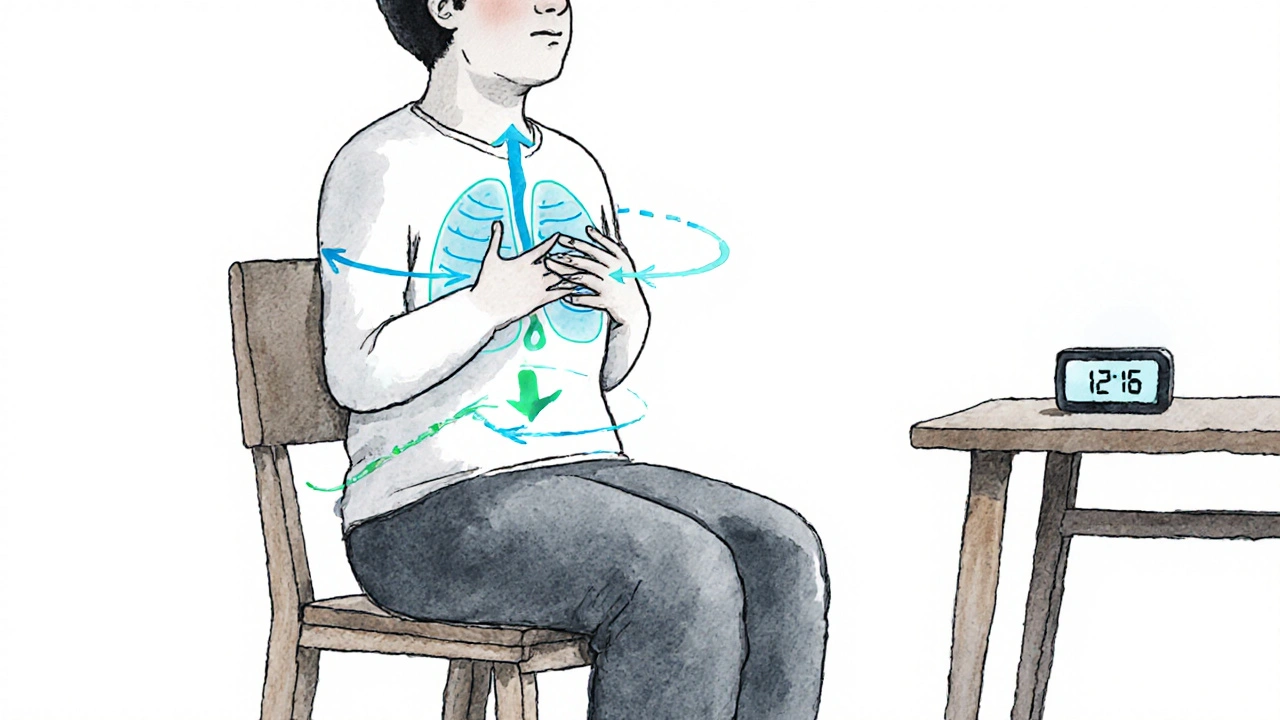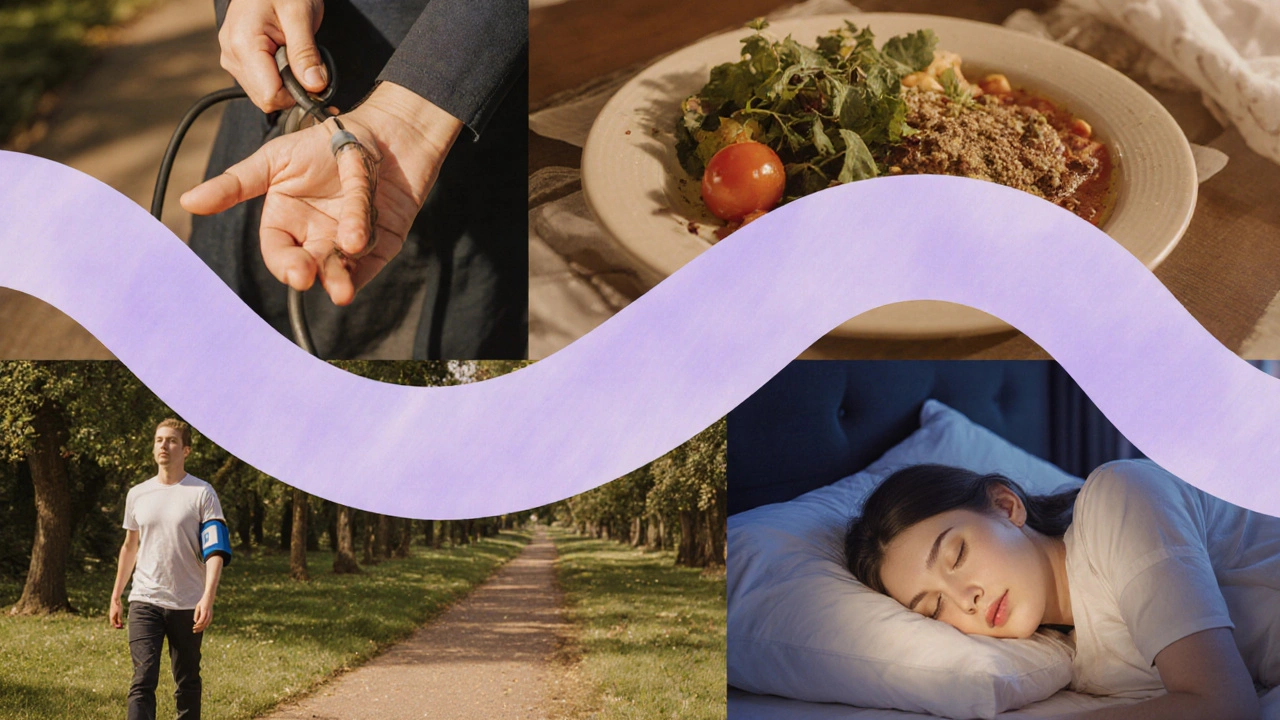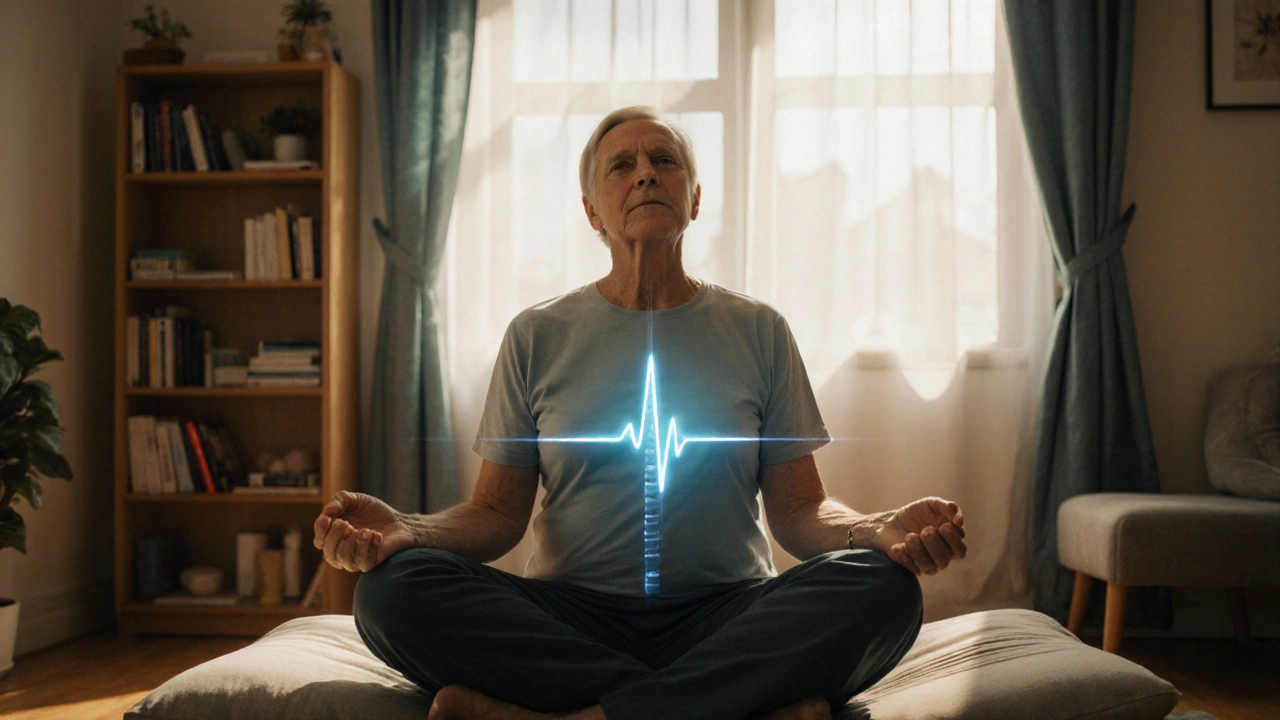Blood Pressure Reduction Estimator
How This Calculator Works
Based on research cited in the article, regular meditation can lower systolic blood pressure by 4-6 mmHg on average after 8-12 weeks of consistent practice. This tool estimates potential reductions based on your current blood pressure and meditation habits.
Your Blood Pressure Estimate
Enter your current measurements to see how meditation might impact your blood pressure over time.
Your Estimated Blood Pressure Reduction
Enter your data above to see your results
Quick Takeaways
- Regular meditation can lower systolic pressure by 4‑6mmHg on average.
- Mindfulness, guided breathing, and yoga nidra are the top three practices for hypertension.
- A 10‑minute daily routine is enough to see measurable change after 8‑12 weeks.
- Combine meditation with reduced sodium, regular exercise, and sleep for best results.
- Track progress with a home blood pressure monitor and a simple journal.
If your doctor has warned you about high blood pressure, you’ve probably heard about pills, diet changes, and cardio. What if there’s a low‑cost, low‑risk tool you can start right now, right at home? Meditation is a mental‑training technique that helps the body relax, reduces stress hormones, and steadies the heart’s rhythm. For many people, it works as a natural complement to medication and lifestyle tweaks, especially when the goal is to bring down those stubborn numbers.
How Meditation Impacts Blood Pressure
Understanding why meditation helps is easier when you look at the body’s stress response. When you’re stressed, the hypothalamus triggers the release of cortisol and adrenaline. These hormones tighten blood vessels, raise heart rate, and push blood pressure up. Over time, the constant surge can damage arterial walls and keep you in a hypertensive state.
Meditation intervenes at three key points:
- Calming the Autonomic Nervous System - The parasympathetic branch, often called the "rest‑and‑digest" system, takes over once you settle into a meditative state. This shift lowers heart rate and dilates blood vessels, directly reducing pressure.
- Reducing Stress Hormones - Studies using saliva tests show a 20‑30% drop in cortisol after an 8‑week mindfulness program.
- Improving Vascular Elasticity - Regular deep‑breathing meditation has been linked to better endothelial function, meaning arteries stay flexible and can handle blood flow more efficiently.
The cumulative effect is a modest but consistent drop in both systolic and diastolic numbers. A 2023 meta‑analysis of 19 randomized trials reported an average reduction of 4.5mmHg systolic and 2.5mmHg diastolic for participants who practiced meditation at least three times a week.

Best Types of Meditation for Hypertension
Not all meditation styles are equal when it comes to blood pressure. Here’s a quick look at the most studied approaches:
| Technique | Typical Session Length | Key Feature | Evidence Strength |
|---|---|---|---|
| Mindfulness‑Based Stress Reduction (MBSR) | 30‑45min | Focus on breath & body sensations | High - multiple RCTs |
| Guided Breathing | 5‑10min | Slow diaphragmatic breaths (4‑6‑8 pattern) | Medium - pilot studies |
| Transcendental Meditation (TM) | 20min | Mantra repetition | Medium - long‑term cohort |
| Yoga Nidra (Yogic Sleep) | 15‑30min | Guided body scan leading to deep relaxation | Low - emerging evidence |
For most beginners, mindfulness and simple guided breathing are the easiest to learn and have the strongest research backing. If you like a mantra, Transcendental Meditation can also fit into a busy schedule.
Getting Started: A 10‑Minute Daily Routine
Here’s a no‑frills routine you can try tonight. All you need is a quiet spot and a timer.
- Set a timer for 10minutes. Sit upright on a chair or cushion; keep your spine straight.
- Close your eyes and place one hand on your chest, the other on your abdomen.
- Take a slow inhale through the nose for a count of 4, feel the belly rise.
- Hold the breath for 2 counts, then exhale through the mouth for a count of 6.
- Repeat the 4‑2‑6 pattern. If thoughts wander, gently label them “thinking” and return to the breath.
- When the timer rings, open your eyes, notice any physical changes, and jot a quick note: "Pulse: ___ bpm, BP: ___/___".
Consistency beats intensity. Aim for at least five days a week for eight weeks, then you’ll start seeing the numbers dip.

Boosting Results: Lifestyle Checklist
- Measure Early: Buy an automatic cuff and record your pressure every morning before coffee.
- Limit Sodium: Keep daily intake under 1,500mg; use herbs instead of salt.
- Move Daily: Even a 20‑minute walk improves vascular health.
- Sleep Well: Aim for 7‑8hours; poor sleep spikes cortisol.
- Stay Hydrated: Dehydration can cause temporary spikes.
When you combine these habits with meditation, the blood‑pressure drop can be twice as large compared with meditation alone.
Common Pitfalls & Pro Tips
Many beginners quit too soon because they expect instant results. Here’s what to watch out for:
- Rushing the Breath - Shallow, fast breaths raise heart rate. Stick to the 4‑2‑6 rhythm.
- Skipping Sessions - Irregular practice reduces the parasympathetic carry‑over effect.
- Using Stimulants Before Meditating - Caffeine can mask the calming response.
Pro tip: Pair your meditation with a short post‑session walk. The walk reinforces the lowered heart rate and helps lock in the relaxation response.
Frequently Asked Questions
Can meditation replace blood‑pressure medication?
Usually not. Meditation is best used as a complement to prescribed drugs. Always discuss any changes with your physician.
How long before I see a change in my numbers?
Most studies report a measurable drop after 8‑12 weeks of regular practice, though some people notice a calmer pulse within the first week.
Do I need special equipment?
No. A comfortable seat, a timer, and optionally a guided‑audio track are enough. A home blood pressure cuff helps you track progress.
Is there a particular time of day that works best?
Morning sessions can lower the day's baseline pressure, while evening practice helps unwind before sleep. Choose what fits your schedule and stay consistent.
What if I have trouble staying still?
Start with movement‑based meditation like walking meditation or gentle yoga flows. The key is keeping the mind focused on breath or a mantra, even while you move.
Give it a try, record your readings, and you might discover that a few minutes of calm each day become the missing piece in your blood‑pressure plan.






